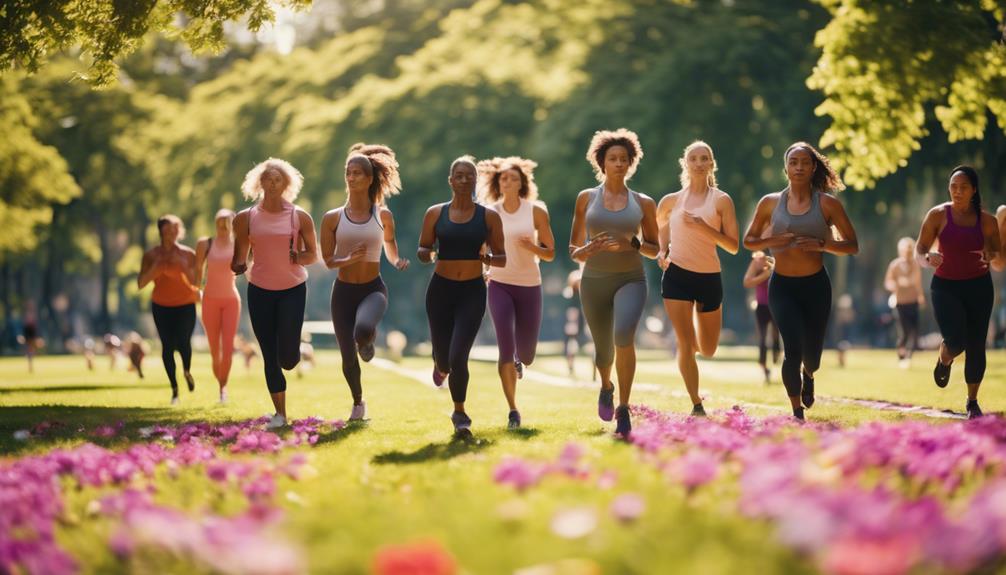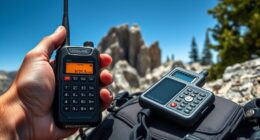You can absolutely stay fit and healthy without a gym! Start incorporating bodyweight exercises like push-ups, squats, and lunges into your routine. Try outdoor activities like brisk walking, jogging, or hiking for a fun twist. Engaging in household chores can also provide a good workout. Dance around your living room or make active family outings a regular thing. Consider active commuting by walking or biking for quick bursts of exercise. All these activities help you meet your fitness goals while enjoying life. If you're curious about more ways to stay active, there's plenty more to explore! In addition to these options, consider joining a sports team or fitness class in your community. This can provide a social outlet as well as a structured way to stay active. Another option is to invest in some basic fitness equipment for your home, such as resistance bands or dumbbells, to add variety to your workouts. And if you find yourself coping with transportation setbacks, remember that even activities like taking the stairs instead of the elevator or doing a quick home workout can help you stay on track with your fitness goals. No matter what, the key is to find activities that you enjoy and that fit into your lifestyle.
Key Takeaways
- Engage in home workouts using bodyweight exercises like push-ups and squats, which require no equipment and can be done anywhere.
- Incorporate outdoor activities such as brisk walking, jogging, or hiking to boost cardiovascular health and enjoy nature.
- Utilize household chores like vacuuming or gardening as effective workouts that help meet physical activity recommendations.
- Try dancing or active games with family, which can be fun ways to burn calories and promote bonding.
Importance of Regular Exercise
Regular exercise is essential for your health, as it greatly reduces the risk of chronic diseases and enhances your overall well-being.
The American Heart Association recommends you aim for at least 150 minutes of moderate exercise each week. By incorporating regular exercise into your routine, you can experience significant health benefits, including improved cardiovascular health, better weight management, and a lower risk of conditions like diabetes and heart disease.
Staying active doesn't have to be an intimidating task. You can break down those 150 minutes into manageable sessions throughout the week. Even short bouts of physical activity can add up and contribute to your overall fitness. For instance, a brisk 30-minute walk five times a week can easily fulfill this guideline while boosting your endurance and mood.
Unfortunately, about 50% of adults fail to meet these recommended exercise levels. To combat this, it's vital to find ways to incorporate movement into your daily life, whether it's taking the stairs instead of the elevator or engaging in a fun outdoor activity.
Regular exercise is key to a healthier, happier you—so get moving today!
Home Workouts and Bodyweight Exercises

To stay fit without a gym, home workouts and bodyweight exercises offer a convenient and effective way to achieve your fitness goals. You can perform exercises like push-ups, squats, and lunges anywhere, requiring no equipment at all. These bodyweight exercises help you build strength and endurance while burning calories.
If you want to intensify your workouts, use household items like water bottles or backpacks to add resistance. This not only enhances your workouts but also keeps things interesting. Online workout videos and apps provide a variety of guided routines tailored to all fitness levels, making it easy for you to stay motivated while exercising at home.
Incorporating high-intensity interval training (HIIT) into your routine can maximize calorie burning and improve your cardiovascular fitness in less time than traditional workouts. Just 20-30 minutes of bodyweight exercises a few times a week can lead to significant improvements in strength and overall health.
Consistency is key, so find a routine that works for you and stick with it. You'll be amazed at how effective home workouts can be for reaching your fitness goals!
Outdoor Activities for Fitness

Embracing outdoor activities can greatly boost your fitness while allowing you to enjoy nature and fresh air. Engaging in activities like brisk walking or jogging not only enhances your cardiovascular health but also helps you maintain a healthy lifestyle. The American Heart Association recommends just 30 minutes of moderate activity five days a week to reap these benefits.
Hiking is another fantastic option that improves endurance and cardiovascular fitness, while also reducing stress and lowering blood pressure. You can also incorporate bodyweight exercises, such as push-ups, lunges, and squats, in parks or your backyard. These exercises provide effective workouts without needing gym equipment.
Don't forget about outdoor sports or recreational activities. Playing games with family or friends not only promotes fitness but also strengthens social bonds and boosts motivation. Biking or running in safe outdoor environments lets you enjoy fresh air while burning calories and improving your overall physical health.
Incorporating Movement Into Daily Life

Finding ways to incorporate movement into your daily life can complement the benefits of outdoor activities and keep you fit without needing a gym. You can start by turning household chores into a workout. Cleaning your home can burn around 4 calories per minute, adding up to about 640 calories a month with regular effort.
Implement a 30-minute rule during your day; take breaks to do quick exercises like push-ups or squats. This simple method increases your activity level considerably. If you work at a desk, consider using an under-desk stepper for leg workouts while you focus on tasks, allowing you to exercise without disrupting your workflow.
Additionally, you can promote vigorous physical activity by walking during meetings or phone calls. Opt for lunch spots that require a longer walk, helping you burn extra calories in the process.
Fun Activities That Burn Calories

You don't need a gym to stay fit; there are plenty of fun activities that help you burn calories while enjoying life.
Whether it's dancing in your living room, playing games with your kids outside, or tackling household chores, you can turn everyday moments into opportunities for exercise.
Let's explore some engaging ways to stay active and enjoy your time!
Active Family Outings
Active family outings offer a fantastic way to bond while burning calories and staying fit together. Engaging in activities like hiking not only enhances cardiovascular fitness but also lowers blood pressure and reduces stress. Plus, you get to enjoy nature as a family!
Playing sports or games can be a fun way to incorporate physical activity into your routine. You can easily burn between 150-250 calories in just 30 minutes, depending on the intensity. Consider organizing family challenges like backyard obstacle courses or friendly competitions to boost motivation and accountability.
Biking or walking to nearby parks for picnics encourages movement and helps you accumulate the recommended 150 minutes of moderate exercise per week.
Regular active family outings are essential for transforming leisure time into valuable fitness opportunities, supporting overall health and wellness.
Dance and Movement
Exploring dance and movement offers a lively way to stay fit while having fun, making it an excellent addition to your family's active outings. Engaging in dance classes, like Zumba or hip-hop, can burn between 150-250 calories in just 30 minutes, providing an energetic workout that boosts your mood and fitness levels.
You don't need to join a gym to enjoy the benefits of dance; hosting home dance parties is a fantastic way to incorporate physical activity into your day. You can easily find online dance tutorials for various styles, allowing you to learn at your own pace and stay active from the comfort of your living room.
Dancing not only improves coordination and overall fitness but also enhances cardiovascular health, making it a fun and effective alternative to traditional workouts. Plus, many dance classes encourage group participation, providing a perfect opportunity for social interaction and community building.
Household Chores Benefits
Incorporating household chores into your routine not only keeps your living space tidy but also provides a surprising workout that can help you burn calories and stay fit.
Doing tasks like vacuuming or sweeping can burn about 4 calories per minute, adding up to around 640 calories each month with regular cleaning. If you wash your car, you can burn up to 6 calories per minute, which means tackling it for just 30 minutes a week can lead to burning 180 calories.
Engaging in yard work, like gardening or shoveling snow, enhances your physical fitness while improving endurance and cardiovascular health. By making cleaning and organizing a part of your day, you'll see improvements in your overall fitness levels, creating a healthier living environment in the process.
Plus, these household chores can help you meet weekly physical activity recommendations, reducing the risk of chronic diseases and boosting your overall well-being.
Morning and Evening Fitness Routines

Starting your day with a quick workout not only boosts your mood but also sets you up for success throughout the day. Waking up just 15-20 minutes early allows you to establish a morning exercise routine that promotes consistent physical activity. You can incorporate simple exercises into your daily rituals; for example, try doing squats while brushing your teeth or preparing your coffee.
Engaging in a morning walk or biking to work not only enhances your fitness but also improves your concentration and creativity for the day ahead. You can even utilize those TV ad breaks for quick exercises like push-ups or lunges, maximizing your time and keeping your fitness routine on track.
As your day winds down, consider establishing evening activities like walking or biking home. These simple choices can greatly increase your daily exercise levels, contributing to your overall fitness without needing a gym.
Utilizing Household Chores for Exercise

You can turn everyday household chores into effective workouts that keep you fit.
Cleaning not only gets your heart rate up but also burns calories, while tasks like gardening build strength.
Cleaning as Cardio
Ever wondered how cleaning your home can double as a workout? It turns out, engaging in household chores can be an effective way to sneak in some cardio. With activities like vacuuming, sweeping, and mopping, you can burn around 4 calories per minute. Over a month of regular cleaning, that adds up to approximately 640 calories!
Here's a quick breakdown of various cleaning tasks and their intensity:
| Cleaning Task | Calories Burned (per minute) | Intensity Level |
|---|---|---|
| Vacuuming | 4 | Moderate |
| Mopping | 4 | Moderate |
| Dusting | 3 | Light |
Gardening for Strength
Gardening offers a unique blend of strength training and cardiovascular exercise, making it an enjoyable way to stay fit right at home. When you dig, plant, or weed, you can burn between 200 to 400 calories per hour. This moderate activity not only helps with weight management but also boosts your overall cardiovascular health.
Engaging in tasks like shoveling soil or lifting pots actively works multiple muscle groups, enhancing your strength and endurance, especially in your arms, back, and legs. Additionally, gardening promotes flexibility and balance. As you bend, stretch, and maneuver in various positions, you're reducing the risk of injuries and improving your body's overall functionality.
Spending just 30 minutes gardening can count toward the recommended 150 minutes of moderate physical activity each week. This makes it a practical choice for staying active without a gym.
Plus, the mental health benefits are significant; time outdoors can lower stress levels and enhance your mood, further supporting your overall well-being.
Engaging in Dance and Movement

Dancing offers a vibrant way to stay active, combining fitness with fun and allowing anyone to get their heart pumping without stepping foot in a gym. You can join dance classes like Zumba or hip-hop, which provide energetic workouts that burn between 150-250 calories in just 30 minutes. These classes not only serve as an excellent form of cardiovascular exercise but also enhance your coordination and balance, contributing to your overall fitness.
If you prefer staying at home, consider hosting dance parties or following online dance tutorials. There's a wide variety of styles and levels available, making it easy for everyone to participate and enjoy. Plus, dancing can boost your mood, making your workout feel less like a chore.
Engaging in dance activities also fosters social interactions. Whether you're dancing with friends or joining virtual dance groups, the connections you make can enhance motivation and make exercising more enjoyable.
Exploring Nature Through Hiking

After enjoying the rhythm of dance, you can take your fitness journey outdoors by exploring nature through hiking. Hiking is an excellent way to boost your endurance and cardiovascular fitness. As you navigate different trails, you engage multiple muscle groups while enjoying a low-impact workout that caters to all fitness levels. Whether you're a beginner or an advanced hiker, there's a trail suited just for you.
Incorporating hiking into your weekly routine helps you meet the recommended 150 minutes of moderate physical activity, making it an effective alternative to gym workouts. Beyond physical benefits, spending time in nature during hikes promotes stress reduction and improves your mental health, contributing to your overall well-being.
Regular hiking can also lower blood pressure and muscle tension, promoting cardiovascular health and reducing your risk of chronic diseases. So, lace up those hiking boots, grab a friend or go solo, and immerse yourself in the beauty of the outdoors. You'll not only enhance your fitness but also find a peaceful escape that nurtures your mind and body. Happy hiking!
Benefits of Active Commuting

Active commuting, whether by walking or biking, offers a simple yet effective way to boost your daily physical activity levels and enhance your overall health. By incorporating active commuting into your routine, you can easily achieve the recommended 150 minutes of moderate exercise each week. This practice not only contributes to improved cardiovascular health but also helps reduce the risk of chronic diseases.
Here's a quick overview of the benefits of active commuting:
| Benefit | Description |
|---|---|
| Increases Physical Activity | Adds up to 30 minutes of daily exercise |
| Enhances Mood | Boosts mental well-being and reduces stress |
| Supports Weight Management | Burns calories effectively |
| Reduces Chronic Disease Risk | Encourages meeting physical activity guidelines |
Conclusion
Staying fit and healthy without a gym isn't just possible; it can be fun and fulfilling!
Did you know that just 30 minutes of daily activity can greatly reduce your risk of chronic diseases?
Embrace home workouts, outdoor adventures, and even household chores as opportunities to move.
By making small changes to your routine, you're not only boosting your health but also enhancing your mood and energy.
So get moving and enjoy the journey to a healthier you!










